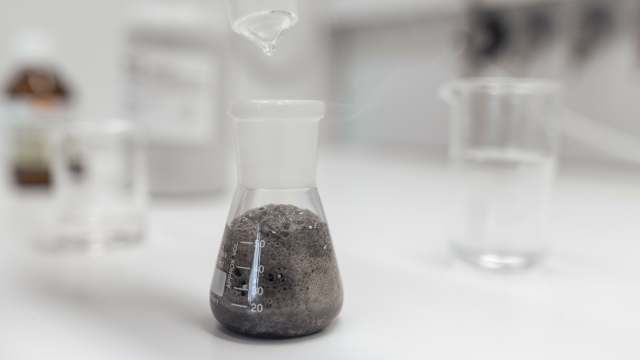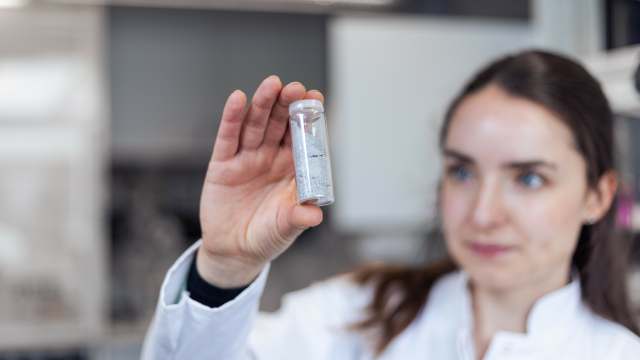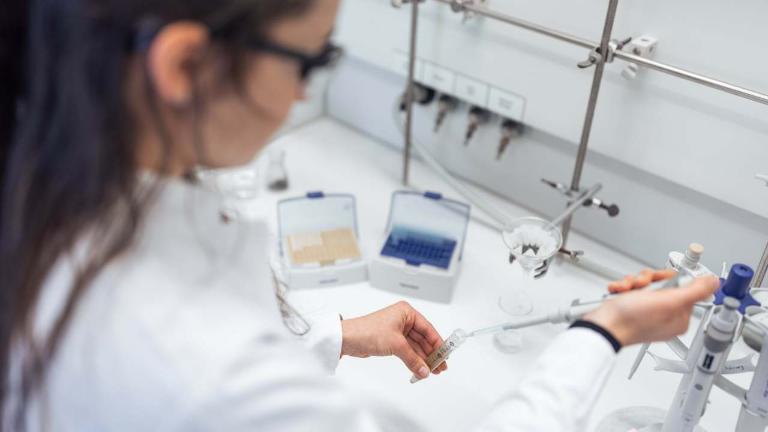E-waste, a resource for recovering high-tech metals
The Audi Environmental Foundation and the Freiberg University of Mining and Technology are working together to develop new techniques for recovering raw materials through recycling.
The recovery of raw materials through recycling processes is a key part of the path to sustainability. That's why the Audi Environmental Foundation has joined forces with the Freiberg University of Mining and Technology with the goal of developing new ways of recovering raw material.
Technologies such as photovoltaics, fiber optics and semiconductors use specific elements such as indium, gallium and tin, and in fact there are components in every electronic device that contain these elements. Unfortunately, these materials are currently lost when the electronic parts containing them are thrown away with household waste. With the selective extraction process that is being developed, it will be possible to recover raw materials from incinerated waste, so as to create a closed loop of the most valuable high-tech metals.
Raw materials and rare earths elements
In 2019, in Germany about 16 tons of primary raw materials were consumed per capita. This includes all raw materials extracted from natural sources, in addition to biomass and fossil fuels, as well iron, copper, lead, and zinc ore. Metallic raw materials are hardly found in Europe and therefore must be imported for processing; however, these materials are depletable resources and are often rare or found only in remote locations. Moreover, they are never found in their pure form, but have to be extracted from ores using complex chemical-thermal processes before they can be processed.
Nevertheless, these metals are essential for many future technologies, such as electric mobility, telecommunications and photovoltaics, and the demand for them will increase worldwide by 2030, according to the United Nations World Resources Council. After all, the number of electronic devices being used globally is growing, and they all use control electronics built with customized semiconductors, which in turn contain rare earths elements.

Slag or fly ash
All of these elements are, as mentioned, rare and valuable, but they are often unintentionally lost. So many people throw away small devices such as flashlights, USB sticks, charging cables and even cell phones into household waste instead of returning them to collection points.
Household waste is usually incinerated-a procedure that does not recover raw materials, which remain in slag or fly ash. The latter ends up in landfills, which means the technological elements leave the cycle and are not available for further use.
Mining the metals
This is exactly where the research project on selective extraction of indium, gallium and tin – funded by the Audi Environmental Foundation – comes in. The goal is to extract the metals contained in fly ash or slag after incineration of household waste for later use in new products. Through reuse and recycling, the raw materials do not have to be extracted from the earth in the first place, an approach which can reduce the environmental impact of mining and emissions from the international trade of ores and wrought materials (i.e., raw material equivalents).
Based on the selective extraction method, Freiberg University of Mining and Technology’s doctoral student in chemistry Betty Leibiger is developing the recycling process in the laboratory: "The challenge is to produce molecules that specifically bind the desired metal ions."

The "Tweezers"
Put simply, Leibiger has to develop a specially shaped "tweezer" that pick out for separation the desired metal ions from a fly ash solution. Each custom-made "tweezer head" - known in technical terminology as a ligand - fits only a specific metal ion, such as indium. "We then use an acid to make the tweezers release the ions" continues Leibiger.
This approach allows to gradually separate individual metal ions out from the mixture and purifies them to make them usable in technological applications. "At this stage of the project, the focus is on developing a number of suitable 'tweezer heads,' and then test and further optimize them on a small scale" concludes Leibiger.
Audi Environmental Foundation
At a later stage, the project could be expanded to include extraction experiments using real fly ash or leaching solutions from the reprocessing of fly ash. The project and the associated doctoral thesis will last a total of three years; the first year is funded by the Audi Environmental Foundation.
"Raw materials are limited. That is why methods of conserving them are all the more important, especially in large quantities that are useful to industry. This process is not only a further scientific contribution to establishing resource cycles but also links traditional environmentalism with innovative technologies, in line with our Greenovation approach” says Rüdiger Recknagel, Director of the Audi Environmental Foundation.
The Second Life of Batteries
This project, as well as many others supported by the Audi Environmental Foundation, raises awareness of the eco-conscious use of raw materials, trying to avoid waste and providing tips on conservation. There are plenty of concrete examples: the German-Indian start-up Nunam turns used batteries into mobile energy storage units. Nunam has also assembled a solar nanogrid from two used Audi e-tron battery modules taken from test vehicles.
This approach allows for conserving resources and saving energy that would have been used for recycling and producing new batteries. The Audi Environmental Foundation is also involved in a project with CLEAR RIVERS to reduce plastic pollution in the oceans. Litter traps have been installed in rivers and harbors, such as those already in place in the Brussels-Charleroi Canal, in Budapest and in Rotterdam. Their purpose is to prevent plastic waste from reaching the sea, and the collected litter is sorted and then recycled.
Source: AUDI AG
VGI | Responsible OU: VP | Creation date: article date | Class 9.1
